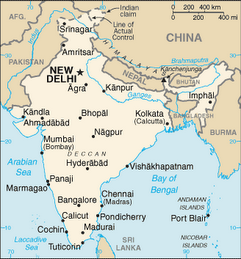 During my last weeks in Hyderabad, I’ve tried to take in as much as possible. Last Sunday was my day to don the Sherwani at my friend, Mandar’s, wedding reception. After a brief Saturday Maharashtran ceremony, we met up Sunday for some snaps with the couple, mingling, and banquet hall dinner. It was a fantastic night full of laughs, as friends from office came in jeans and polos while I dressed to the nines in traditional garb. Though I lacked the curl-toed shoes fit for Sherwani, my traded sandals with Sayeed, our driver, accented my attire, and saved me from the brunt of the jokes.
During my last weeks in Hyderabad, I’ve tried to take in as much as possible. Last Sunday was my day to don the Sherwani at my friend, Mandar’s, wedding reception. After a brief Saturday Maharashtran ceremony, we met up Sunday for some snaps with the couple, mingling, and banquet hall dinner. It was a fantastic night full of laughs, as friends from office came in jeans and polos while I dressed to the nines in traditional garb. Though I lacked the curl-toed shoes fit for Sherwani, my traded sandals with Sayeed, our driver, accented my attire, and saved me from the brunt of the jokes. My one frustration for the night stemmed from the inevitable trauma that standing and eating creates. It’s worse in India, because not only are you standing and eating, but also it’s hot, and you’re eating with your hands. Sure, by using your hands you avoid those awkward fork-knife moments when gravity and dexterity demand the need for more hands, and there’s that unfortunate reality that one must hold the plate. But then there’s the added problem of sullied fingers… dal and rice in the nails, butter paratha smeared on the knuckles… and the non-existence of napkins! Oh no, I thought, in my internal Jerry Seinfeld voice, what am I to do? I had just finished dinner and conversation, was asked for a photo with a few new arrivals, and went briskly for a napkin. None to be found… and what with the plates, you might ask? Yes, I thought of that too. But the napkins were maliciously stacked in with the plates in an alternating color-coded pattern, white plates and yellow napkins, and all napkins from the top had been swiped. Think, think…
Now only napkins 15 plates deep still protruded their angular corners from beneath the circular rims of heavy porceline. I tried for one, but after a moment of slippery fingers sliding over the napkin, dripping delectable masala from their tips over the pristine white plates that would serve others, I cringed in embarrasment. Now what? Smiles, the offer to shake my hand… 'I’m sorry, one second.' All at once I was struck with an epiphany – my pants! Of course - beneath the side of my Sherwani lay a slit up to the thigh, and beneath, the textured cotton of my pijama that knows its place as substitute. With a deft and furtive swipe amidst askance onlookers, I made my move and shuffled the painted fingers over cotton, front and back. At long last, I was free… free of the dal makhani and murgh malai that had encrusted my right hand.
In a moment of triumph I almost called out, beckoning the curries. In perhaps my greatest challenge in India, I had prevailed. I had escaped the impossibility of the napkinless moment when my fingers became my nightmare.

















